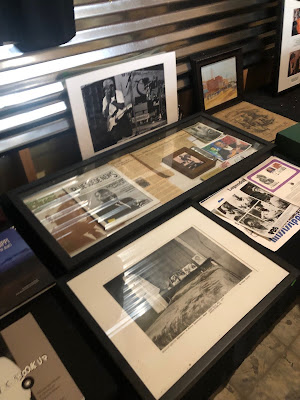Anyway, there were a lot of great new releases in 2023 from a lot of new faces and a few familiar ones as well. We are compiling our favorites at Blues Bytes and there were just so many noteworthy releases that we just decided to do a Top 20 list, which was hard enough to do, but I've decided to condense my list to a Top 10 list for the blog.
I realize that a lot of listeners don't really focus on albums anymore, preferring to download their favorites to the listening device of their choice, but please keep in mind that blues artists receive very little compensation for downloads at all, almost negligible funds from these services, which is very frustrating. It greatly benefits them if you actually buy their albums and go see them perform in person, so do yourselves a favor and check out some of these releases (you'll be glad you did) and check these folks out in person if you can.
Without further ado, let's check out....
Friday Blues Fix's Top 10 Albums for 2023!!! (in alphabetical order)
The Dig 3 – Damn The Rent (no label): This is a great set of blues and roots tunes, traditional with an eye toward the contemporary and always a lot of fun. This is a side project for these gentlemen, but it would be fine if it became a regular occurrence.
D.K. Harrell – The Right Man (Little Village Foundation): This year, more than any, has given me encouragement that the future of the blues is in the best hands possible. Young Mr. Harrell’s release just blew my socks off earlier this year, and there were so many other good ones to follow this year from the younger generation. It's an amazingly assured album from such a young talent.
Hudspeth & Taylor – Ridin’ The Blinds (Hudtone Records): A wonderful tribute from two top notch Kansas City bluesmen to early, pre-war blues that gives the classic songs a fresh, updated feel and will have you revisiting the originals.
Candice Ivory – When The Levee Breaks – The Music of Memphis Minnie (Little Village Foundation): Memphis Minnie was one of the true pioneers of the blues, and Ms. Ivory’s breathtaking tribute to her music should introduce the blues legend to a whole new generation of listeners.
Joe Krown – Tribute (Sledgehammer Records): I heard this album around the time Jazz Fest rolled around and it brought back such great memories…..just a really fun disc for any fan of New Orleans music with guest appearances from Leo Nocentelli, Ivan Neville, Jason Ricci, Noah Hunt, and Walter "Wolfman" Washington (his last studio recording).
Stan Mosley – No Soul, No Blues (Dialtone Records): An incredible release that really took me by surprise…Mosley shows he’s got PLENTY of soul and PLENTY of blues in his repertoire. Soul and blues fans must track this album down!
John Primer – Teardrops for Magic Slim (Blues House Productions): Primer’s tribute to his former employer is obviously a labor of love and sounds great from start to finish, recorded live at Rosa's Lounge in Chicago.
Walter “Wolfman” Washington – Feel So At Home (Tipitina’s Record Club): Washington’s final album, completed a few months before he passed away, follows the path of his previous effort, but leans more toward the blues. While he's missed a lot, he left us with a lot of wonderful music.
Trust me when I say my next ten are just as good as these ten.....it was a tough task separating them. You can see my next 10 with the other reviewers' Top 20 albums in the January issue of Blues Bytes in a few weeks.








































